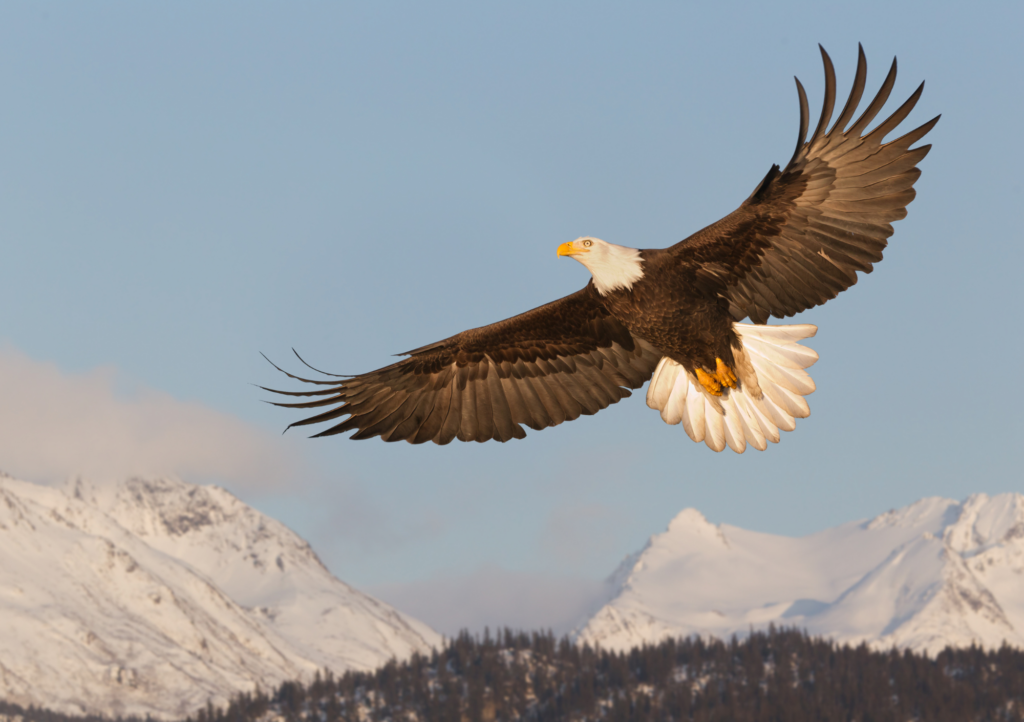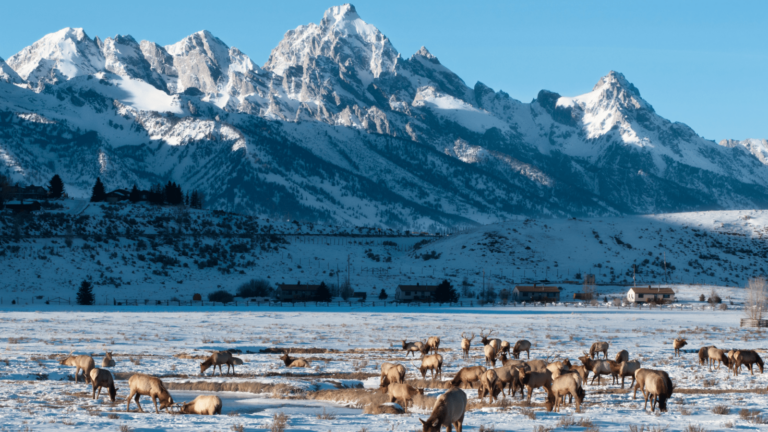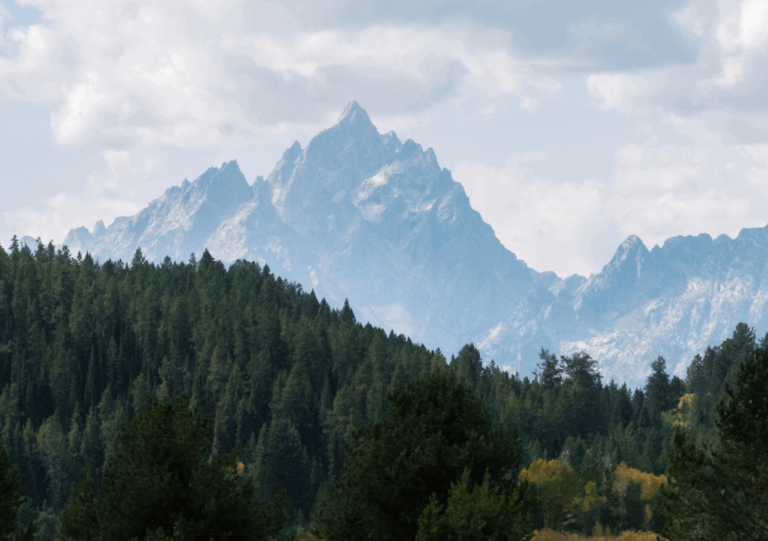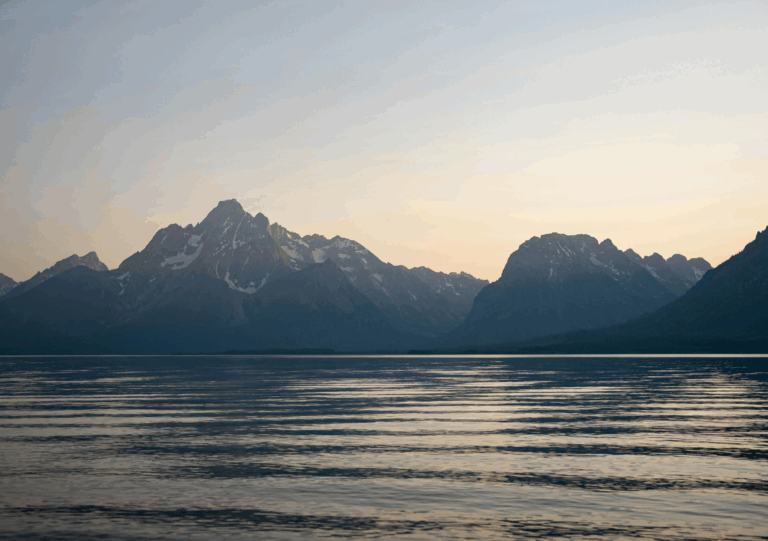Welcome to our blog series on the incredible wildlife in Jackson Hole! If you caught our previous post, Jackson Hole Wildlife on the Snake River, you already know that this region is a paradise for nature lovers and wildlife enthusiasts. In that blog, we gave you a broad overview of the animal species that can be spotted along the Snake, but now it’s time to dive deeper— starting with Snake River birds of prey.
In this new series, we are going to take a closer look at each species, starting with the birds of prey that call Jackson Hole and the Snake River home. Stay tuned as we jump in to the habitats, behaviors, and best spots to catch a glimpse of these birds.
Habitats of Snake River Birds of Prey
The diverse ecosystem of Jackson Hole provides an ideal habitat for various birds of prey. The Snake River, with its rich supply of fish and other prey, is a particularly attractive hunting ground for eagles and ospreys. These raptors prefer areas with tall trees or cliffs for nesting, offering a vantage point to spot prey and keep their young safe.
Eagles: Bald eagles, the most iconic birds of prey in this region, often nest in tall cottonwood trees along the Snake River. These areas provide them with easy access to fish, their primary food source, as well as other small mammals and carrion. Golden eagles, on the other hand, are more commonly found in the open landscapes and mountainous regions surrounding the valley, where they hunt rabbits, hares, and other small mammals. According to the Teton Raptor Center, Wyoming is home to the core population of Golden Eagles in the U.S. and offers some of the best wintering habitat for the species
Ospreys: Ospreys are closely associated with water bodies, making the Snake River an ideal habitat. These birds are expert anglers, diving from great heights to snatch fish from the water with their sharp talons. They build large stick nests, typically on top of snags, utility poles, or specially designed platforms.

Behaviors of Birds of Prey
Understanding the behaviors of eagles and ospreys enhances the experience of observing them in the wild.
Bald Eagles: Known for their impressive wingspans and powerful build, bald eagles are often seen soaring high above the river, using thermal currents to glide effortlessly. During the breeding season, you might observe pairs performing aerial displays or tending to their nests. Bald eagles are also opportunistic feeders, sometimes seen scavenging or stealing prey from other birds, especially targeting the Ospreys who are experts at fishing.
Golden Eagles: These raptors are known for their incredible hunting skills. They can spot prey from great distances and dive at high speeds to capture it. Golden eagles are generally seen alone or in pairs, patrolling the open fields and mountainous areas.
Ospreys: Ospreys exhibit fascinating fishing techniques, hovering over the water before plunging feet-first to catch fish. They are highly skilled anglers, with a success rate higher than most other fishing birds. Watching an osprey hunt is an experience in itself, with their precision and agility.
Conservation Efforts and Challenges
The conservation of birds of prey in Jackson Hole is crucial for maintaining the ecological balance and their survival. Both eagles and ospreys have faced significant challenges over the years, including habitat destruction, pollution, and human disturbance.
Conservation Efforts:
- Habitat Protection: Efforts to protect and restore riparian habitats along the Snake River are vital. These initiatives help preserve the nesting and hunting grounds of birds of prey.
- Pollution Control: Reducing the use of pesticides and pollutants that contaminate water bodies and the food chain is crucial. Bald eagles, in particular, were once endangered due to the pesticide DDT, which caused eggshell thinning.
- Public Education: Raising awareness about the importance of birds of prey and encouraging responsible wildlife viewing can minimize human disturbances.
Challenges:
- Climate Change: Changing temperatures and weather patterns can affect prey availability and habitat conditions.
- Human Disturbance: Recreational activities along the Snake River can disrupt nesting sites and feeding grounds.
Best Spots for Encountering Birds of Prey in Jackson Hole
For those eager to see eagles and ospreys in action, Jackson Hole offers several prime locations:
- Snake River: The entire stretch of the Snake River is a hotspot for birdwatching. Our scenic floats on the Snake River provide a unique vantage point to observe these raptors hunting and nesting.
- Grand Teton National Park: The park is home to numerous birds of prey. Look for bald eagles along the riverbanks and ospreys near lakes and ponds.
- National Elk Refuge: This refuge is another excellent location to spot bald eagles, especially during the winter months when they scavenge on carrion.
- Flat Creek Wetlands: Located near Jackson, this area attracts a variety of wildlife, including birds of prey.
Outside of Jackson Hole, there is an abundance of other Wyoming birding hotspots in iconic areas such as Yellowstone and Devils Tower National Monument.
Experience the breathtaking beauty and wildlife of Jackson Hole by joining one of our Jackson Hole Float Trips. Whether you’re an avid birdwatcher or simply love nature, witnessing eagles and ospreys in their natural habitat is truly unforgettable. Help us preserve their environment and ensure these magnificent birds thrive for future generations. Book a Snake River Scenic Float or a Snake River Private Float today to enjoy an up-close view of the incredible wildlife in Jackson Hole. Happy birdwatching!





